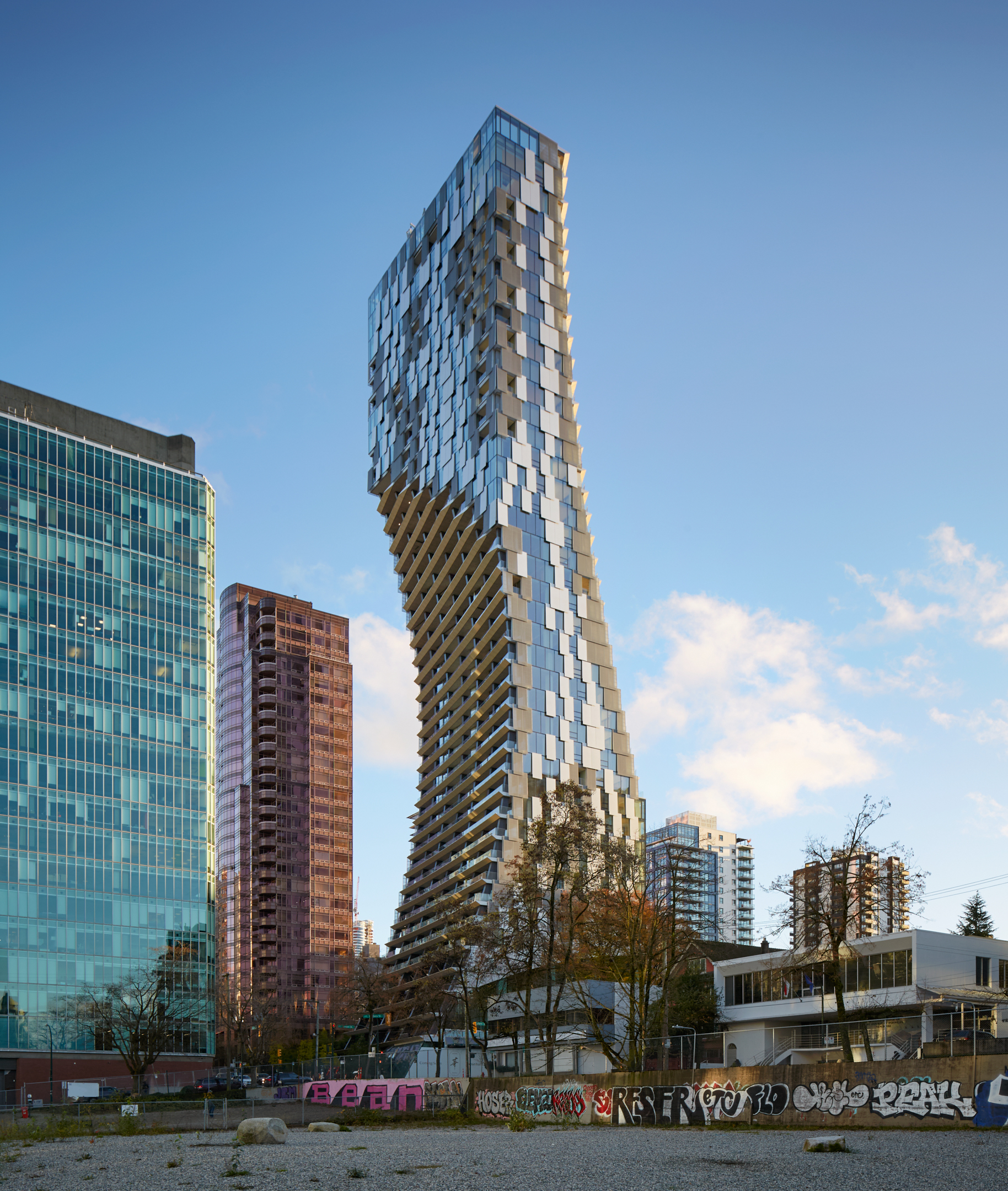Agile minds: Glotman Simpon’s unique approach to engineering
The firm has carefully crafted an approach that creates generalists and specialists who are ready to tackle any job, anywhere.

Credit: Matheson Photography
The 43-storey Alberni tower project’s distinctive shape commands attention in Vancouver, even among the other iconic towers that make up the city’s skyline.
This striking profile is achieved by chiselling two emphatic scoops out of its sides to form deep balconies. Rather than remaining static, its silhouette is always changing, creating illusionary profiles of arching cantilevers.
It’s technical feats like this that have become synonymous with engineering firm Glotman Simpson.
While structures like these win award after award and splash the covers of magazines, they only showcase one part of the firm’s true agility. Glotman Simpson’s team also has been busy tackling industrial rendering facilities, an Olympic Cauldron, remote hospitals, seismic upgrades in downtown Los Angeles and much more.
Their ability to utilize a wide range of materials on a wide range of project scopes in locations across the globe is rare but no accident. It has been carefully trained.
“Glotman Simpson is a team of excellent generalists and excellent specialists at the same time. This is very unique and comes from diverse experience and exposure,” said Omar AlHarras, an Associate at the firm.
For AlHarras and Glotman Simpson, agility in engineering is expressed in three key areas: operational agility, technical agility, and agility in scale and geography.
Operational Agility: Ryan Nikiforuk, Director, Institutional Projects, highlighted the firm’s ability to respond quickly to unexpected challenges within projects. This agility is rooted in a holistic engineering approach that emphasizes collaboration across disciplines and prioritizes the success of a project as a whole.

“We focus on integrating our designs seamlessly with other disciplines, proactively addressing challenges that may impact a project. By staying engaged and responsive throughout the design and construction process, we adapt quickly and work with our partners to develop the best solutions for a project.”
Technical Agility: Glotman Simpson’s tool box is robust. The firm prides itself on being material-agnostic, selecting construction materials and methods when they are most appropriate. The firm’s Chinatown 7 project, which utilized concrete, structural steel, and mass timber to meet specific architectural and structural requirements, is a prime example of this approach.
Agility in Scale and Geography: It’s not just about big downtown steel skyscrapers. The firm’s portfolio showcases a wide range of project types and sizes, from massive multi-tower developments like the Oakridge project to small-scale, complex structures like the Checkmate Winery.
“If you look at our portfolio, we have projects ranging in scale from multiple tower developments to bespoke custom projects that require very complex engineering,” noted Nick Maerkl, an Associate at Glotman Simpson. “Being able to move between these different projects and service them well is a key aspect of our agility.”
Geographical agility is another strength. While maintaining a strong West Coast presence, Glotman Simpson has successfully delivered projects across Canada and the United States, adapting to different regulations, soil types, and market needs.
“We’re delivering multiple very large-scale projects in Kelowna with technical constraints, completely different soil typologies, and different market needs,” said Harrison Glotman, Principal and third-generation leader at the firm. “Operating in multiple regions helps us avoid sticking to ‘bread-and-butter’ solutions and allows us to be more creative and open to new ideas.”
Cultivating Agility
Unlike other firms in the space, Glotman Simpson has no internal department for towers, residential projects, hospitals or any other type of structure.
That’s on purpose.
The firm fosters agility by intentionally avoiding silos. Engineers at Glotman Simpson are exposed to various types of projects, enhancing their ability to adapt and innovate.
“Our design team gets exposure working on all these different projects all at once,” AlHarras explained. “The more exposure you have, the stronger designer you’ll be, and the more you’ll be able to service clients.”
This agility provides significant benefits, particularly when tackling complex projects with diverse needs.
“Agility allows us to merge ideas and come up with innovative solutions. It’s about bringing value to the client by being flexible and responsive to their unique challenges,” said AlHarras. “We can zoom out to work on a very high level, providing a ton of options and brainstorming ideas, but also dive deep to give that artisanal service on a micro level.”
AlHarras’s own experience reflects the firm’s commitment to agility. Since joining Glotman Simpson nearly a decade ago, he has worked on a multitude of projects across different sectors and regions, which he credits for his development as a well-rounded engineer.
“I definitely got fortunate in that regard,” he said. “We take ownership of the project from concept design all the way through construction completion, which is the most important thing for experience and creating a well-rounded engineer.”
Looking Ahead
As Glotman Simpson continues to expand, including recent growth into Eastern Canada and additional U.S. markets, agility remains at the forefront of its strategy.
“With diverse experience and familiarity with different building codes and requirements, we’re ready to hit the ground running,” AlHarras remarked. “Being an agile firm means we’re prepared to provide good service anywhere in North America.”

